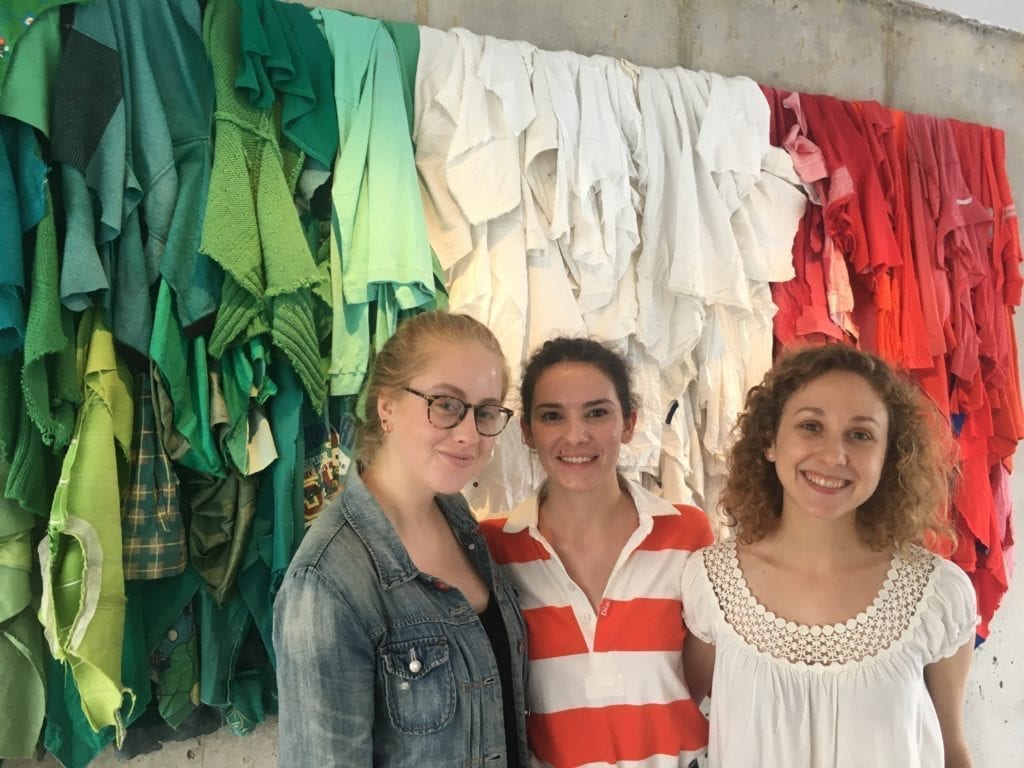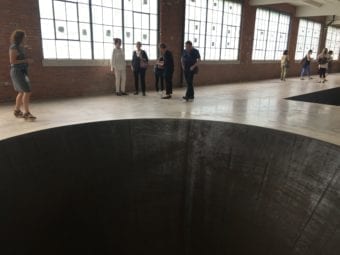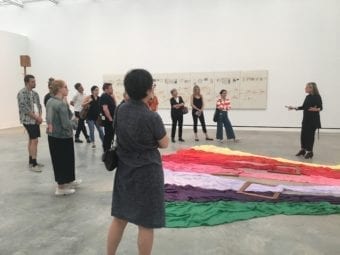CIMA Summer Intern Celia Karpatkin reports on the SoHo Arts Network’s outing last week to the Hudson Valley to see Dia:Beacon and Magazzino Italian Art.

On July 23, 2018, CIMA was overjoyed to join the Soho Arts Network on private tours of Dia:Beacon and Magazzino Italian Art. Dia Art Foundation was founded in 1974 by Philippa de Menil, Heiner Friedrich, and Helen Winkler “to help artists achieve visionary projects that might not otherwise be realized because of scale or scope.” Dia:Beacon, opened in 2003 by Dia Art Institute, is housed in a former Nabisco box factory on the banks of the Hudson River in Beacon, New York. The former industrial building is the perfect space for a unique collection of large-scale and monumental works by a variety of artists. CIMA staff and interns along with the Soho Arts Network toured a selection of the current installation, including works by Michael Heizer, Dan Flavin, Walter de Maria, Robert Irwin, and Fred Sandback.

Discussion of the collection focused on the ways Dia:Beacon’s unique space influenced visitors’ experience of the art. An example is Dan Flavin’s ‘Monument’ for V. Tatlin (1964), with pieces installed on either side of an interior wall. Flavin’s signature fluorescent lights take on a new, personal meaning when viewed in natural light from the large windows on one side of the wall, or isolated on the interior. Robert Irwin’s Excursus: Homage to the Square³, 1998/2015, creates new environments within Dia:Beacon’s soaring rooms, a theme of space and division echoed in Fred Sandback’s simple string constructions that create planes reaching from ceiling to floor to wall.
After a quick lunch, the Soho Arts Network next visited Magazzino Italian Art in Cold Spring, New York, where we were greeted by founders Nancy Olnick and Giorgio Spanu for a private tour. Magazzino, which opened in June 2017, was created to house the private Olnick Spanu collection and to promote the study and appreciation of post-war and contemporary Italian art in the United States. The current exhibition of Arte Povera (“impoverished art”) works from the Olnick Spanu collection opened on March 1, 2018, and exhibits the core Arte Povera works of the Olnick Spanu collection. During the 1960s, a monumental decade worldwide, Italy was coming off of a Marshall-Plan-fueled postwar economic boom and transforming into a place of rapid industrialization as well as widespread student protest. Dissatisfied with the values of both Italy’s traditional cultural and newly industrial institutions, the 12 Arte Povera artists currently on display at Magazzino sought to eradicate traditional artistic boundaries by exploring ideas of nature, science, globalization and ethics in their works. Multiple works on display question the notion of ownership in particular. Mappa, one of an iconic series of works by Alighiero Boetti created in 1983, hangs in the first gallery. Embroidered by local women in Kabul, Afghanistan, and featuring flags of the world, Boetti saw this as a purely conceptual piece: one in which he did “absolutely nothing” to create it, and so “what emerges from the work is the concept”—and questions of how geopolitical factors influence our perception of ownership and authenticity.

Many works in this exhibition are interested in these same questions of representation and originality. In Mimesi (1976-88), Giulio Paolini places two identical plaster casts of the classical sculpture Hermes by Praxiteles facing each other. Paolini did “not wish to be the creator or discoverer of these sculptures,” but instead sought to “be the observer who sees the distance that divides them and therefore captures all the possibilities of relationship, or absence of relationship, between the image and us.” Giuseppe Penone also saw his role as artist as divorced from that of creator: his series Alberi, of which Albero di 3 metri (1988) is on display at Magazzino, is made up of trees with their bark removed, showing the form of the trunk without distraction. Penone considered the tree “the perfect sculpture” on its own, saying “my task is to reveal it.”
Taken together, these two exhibitions offer new perspectives on artists and works that can be difficult to see, whether due to size and scale or simply historical ignorance of their contribution in the United States. Magazzino Italian Art is available by appointment free of charge. and Dia:Beacon is open to visitors Thursday to Monday.
Interested to learn more? CIMA displayed one version of Giulio Paolini’s Mimesi, the very first version that he created in 1975, during its 2016-17 exhibition Giorgio de Chirico – Giulio Paolini / Giulio Paolini – Giorgio de Chirico. Watch CIMA Fellow Maria Bremer talk about this piece:
